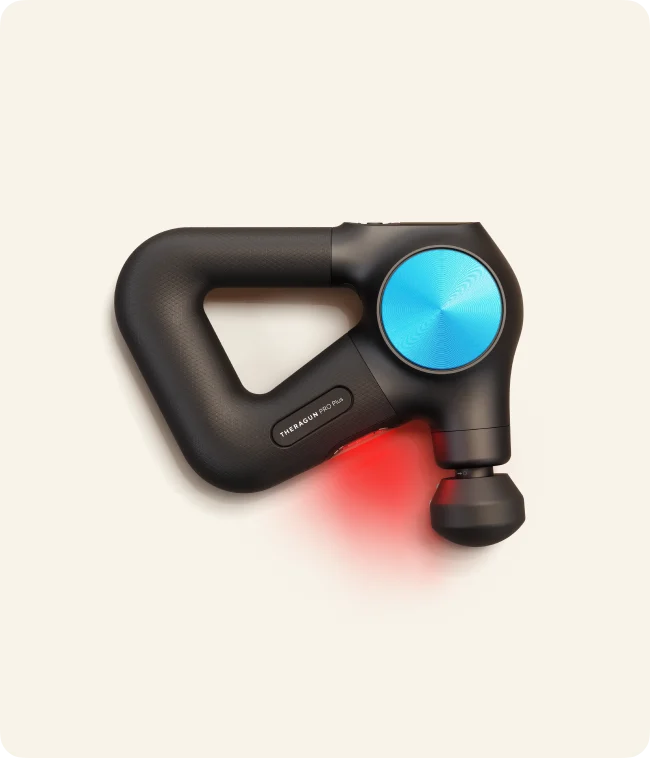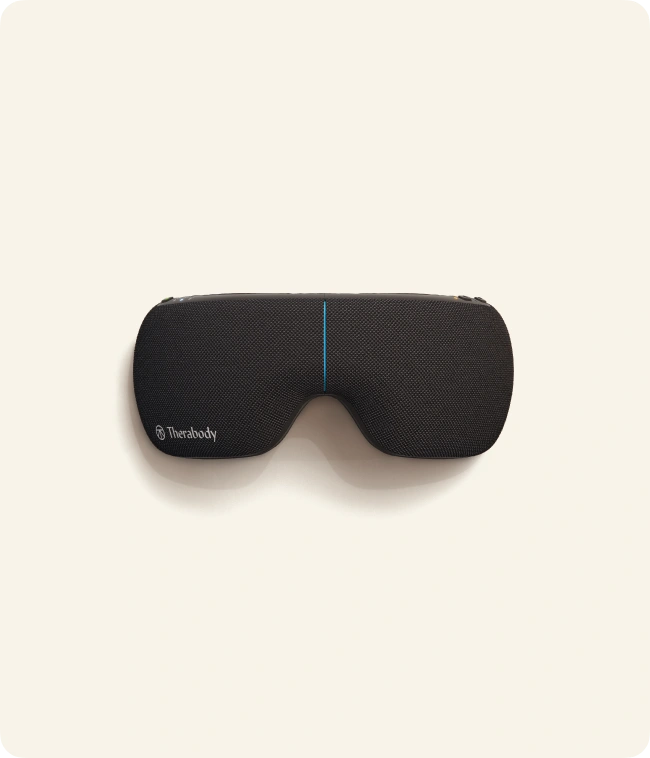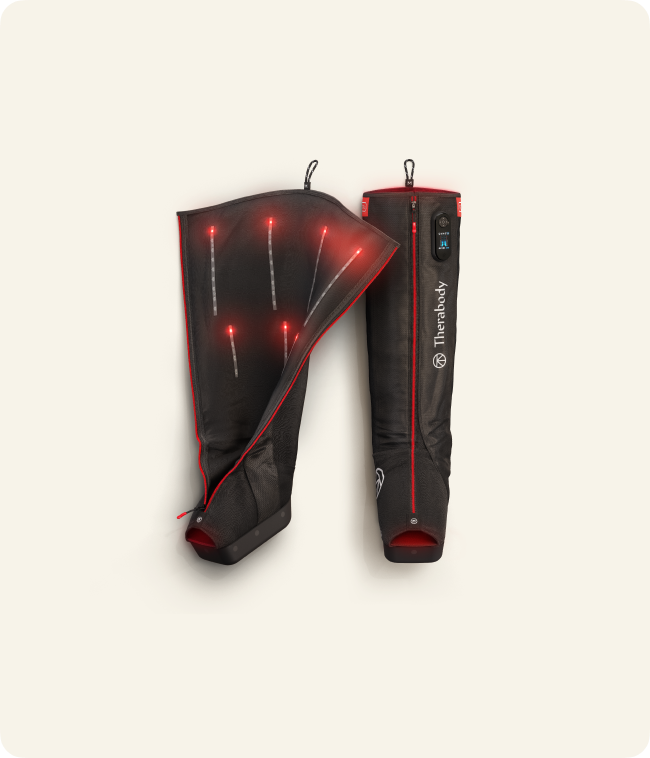
Josh Allen's Recovery That Meets Every Demand
Authors: Therabody Scientists: Michelle Darian, MS, MPH, RD, LDN; Tim Roberts, MSc; Rachelle Reed, PhD, MS, ACSM-EP; Josh Adams, MS, CSCS
It's the fourth quarter of the Buffalo Bills' divisional playoff game, with the whole season on the line. Josh Allen finds a pocket and sprints for 15 yards before taking a crushing hit. Forty seconds later, he's back in the huddle, showing no signs of contact. How?
Allen is known for his dual-threat ability: powerful running and strong throwing. He's not just mobile, he's aggressive. And he simultaneously has what's considered one of the strongest arms in the NFL. He’s known for his performance under pressure — and he's equally known for putting in the serious work needed to perform at the highest level.
How Allen prepares, trains, and recovers are all essential parts of how he performs.
Think of performance like an equation: Performance + Recovery = Peak Performance Potential.
Recovery is not just something you do when you’re sore — it’s a key part of your training program that keeps your performance strong and your progress consistent.
Here, we’ll dive in on how Allen’s recovery sets him apart. Learn how to warm-up, stay in the game, and recover like Allen with the Theragun® PRO Plus, JetBoots® PRO Plus, and ThermBack LED.
Because when your recovery does more, so can you.
What quarterbacks are up against
NFL players demand a lot of their bodies (and minds).
Strength, power, and speed development are all taxing to the musculoskeletal and nervous systems. When you add in the highly physical nature of a collision sport and the mental grind of a full NFL season, consistent recovery isn’t just a nice-to-have, it is essential.
Quarterbacks have specific and demanding needs when it comes to preparing for and recovering from training and game play. They require shoulder mobility for their throwing shoulder, the ability to generate rotational power, move in the pocket, and the ability to take off running or take a hard hit on a second's notice.
Before developing a recovery protocol fit for a quarterback, it’s important to “look under the hood” of the position. Quarterbacks have unique needs that are unlike any other athlete. They need to be able to:
- Drop back from center to avoid the rush and create space to survey the entire field
- Move quickly in all directions with powerful, intentional movements
- Maintain a solid base, where every pass starts, rotating the hips first and then the upper body to help generate and maximize power
- Of course, have a strong, precise throwing arm that accelerates forward and releases the ball
- Seamlessly connect the upper and lower body to stay stable and mobile through the lower body, spine, core, chest, and shoulder to generate power repeatedly
- All of this has to be done with split-second decision-making ability
NFL quarterbacks perform this sequence at the highest level with both power and accuracy. And this is all assuming that the 275lb defensive end charging at full steam doesn’t make his big play first.
This places significant demand on the body and mind.

The recovery behind the rise
Allen wasn't an overnight success. He's known for having an unmatched work ethic that has enabled him to make consistent year-over-year improvements.
Over the last seven seasons, he’s transformed his game. From refining his mechanics to becoming more composed under pressure, he has built a solid foundation that elevates both his decision-making and leadership.
And now, Allen is one of the league’s most complete quarterbacks.
To understand how to prepare and recover from these demands, and enable consistent progress, we must first ask what the body needs to perform at its best.
- Where does the body need to be mobile and flexible?
- Where does it need to be stable and powerful?
- What muscles are being worked (and overworked)?
- What are the potential injury risks?
And because of how physically Josh Allen plays, his demands are higher than most. On a single play, Allen can sprint, throw a 70+ yard pass, get hit, and start the next play like it’s his first. It takes more than talent and grit to sustain that level of performance — it takes intention.
NFL players understand that recovery isn’t a single action. It’s built into everything, from how you prepare, train, compete, and travel, to what you eat, how you sleep, and how you spend your time. These recovery behaviors determine how you show up every time you step into the weight room or out onto the field.
Allen’s unique game play and resulting needs shape how we at Therabody think about building technology and personalized plans that help athletes prepare, perform, and recover.
Athletes who demand more from their bodies need recovery tools that give them more. But these tools aren't just reserved for the pros.
Your recovery should work as hard as your training, whether you're an NFL quarterback, training for a competition, or quarterbacking the demands of an active life.
You may not have linemen running at you at full force, but between tough workouts, HIIT classes, marathon training, and strength training, it can feel that way for days after.
With all of this in mind, let’s dive into the protocols that keep Allen prepared, in the game, and recovered, and how you can benefit from complete recovery, too.

From Allen’s game plan to your everyday routine
Here, we’ll cover the protocols that help Josh Allen warm-up, stay in the game, and recover with the Theragun PRO Plus, JetBoots PRO Plus, and ThermBack LED.
Activation before a training session or game
Allen's focus : Before a training session or on game day, Allen is focused on preparing his muscles for the work ahead. He’s thinking about boosting mobility and stability and reducing the risk of injury. This means priming the throwing shoulder and chest muscles, warming up the hips for lateral and rotational movements, and prepping the legs for off-balance precision and sprints.
Protocol : Allen uses the Theragun PRO Plus’ heated percussive + LED light to prime key muscle groups before training or kick off. Here, he focuses on:
- Shoulder mobility and reducing stiffness to maintain power and accuracy during throws
- Chest, lats and traps to ease tension in areas critical to his throwing motion, allowing a fuller range of motion
- Hips, glutes, and lower back to improve rotation, ability to make off-balance throws, and reduce risk of injury during explosive rotational movements
- Quads and hamstrings for stride efficiency, sprint mechanics, and the ability to push through heavy contact
- Calves and lower legs to ease tightness and boost explosiveness
“Before I step on the field, I always use my Theragun PRO Plus. The combination of percussive, heat and LED gets my muscles firing and ready to go. It’s a must before every practice and every game,” says Allen.
The science : Heated percussive therapy + LED provides therapeutic warming to the muscles, which boosts circulation, loosens stiff muscles, and increases mobility and flexibility. Combining these three therapies efficiently preps the muscles three times faster than percussive therapy alone. Studies show that using a Theragun, even for just two minutes, can increase range of motion by 11%. This is critical in preparation for a workout, and more significant than it may seem. Oftentimes, the difference between good and great athletes is in the small margins and tiny details of optimizing mental and physical prep. [1, 2]
Your move
Use Theragun PRO Plus’ heated percussive + LED treatment before a workout to prepare your muscles for the work ahead. Target your primary movers for 2-3 minutes per muscle group. If you’re heading out for a run, focus on your hips, quads, hamstrings, and calves to loosen up your lower body and move more efficiently. If you’re gearing up for an upper body strength workout, work your biceps, triceps, shoulders, and chest to help you move more powerfully and perform at your best.
Mid-game performance maintenance
Allen's focus : Allen strategically uses his time on the sideline or in between drills to recharge and reboot the muscles he’s been using. He’s focused on staying loose and delaying the fatigue of highly used muscles. This means keeping his shoulders and chest activated, keeping his hips loose, and engaging the legs for powerful movements.
Protocol : Allen uses Theragun PRO Plus’ heated percussive therapy to keep his muscles loose. Here’s the game plan:
- Keep the shoulders loose and mobile to preserve throwing velocity, maintain accuracy under fatigue, and reduce stiffness
- Ease elbow stiffness and discomfort after a high volume of throwing
- Target the hips, glutes, and lower back to maintain lower-body fluidity and agility throughout the game
- Engage the calves and lower legs to support explosive starts and efficient movement as fatigue sets in
- Prioritize the quads, calves, glutes, and hamstrings to reenergize key running muscles and his throwing base to maintain power and balance under pressure
The science : Heated percussive therapy helps to ease stiffness, maintain efficient and explosive movements, and produce power as fatigue begins to set in. In fact, a 2021 study found that using a Theragun in between bench press sets increased the number of reps performed by 12% by helping to delay the onset of fatigue. Hitting more reps allows you to make steady progress, adding up to bigger gains over time. [3]
Your move
Bring your Theragun PRO Plus to the gym or to your workout class and use it in between exercises or sets to help maintain mobility and flexibility and reduce tension. Re-engaging the muscles you’re working can help you to stay agile and powerful during the rest of your workout. Use heated percussive therapy for 30-60 seconds on each active muscle for an efficient refresh. If it’s an upper body strength day, target your chest, traps, shoulders, biceps, and triceps. In between rounds of a HIIT class, target the muscles you’re about to use next.
Post-game training recovery
Allen's focus : After a game or a training session, Allen is focused on expediting recovery of stiff and sore muscles. He’s thinking about boosting circulation to highly used joints and muscles. This means using a precise combination of therapies to encourage blood flow to stiff muscles, limiting inflammation to swollen joints, and getting targeted pain relief to minimize downtime and get back out on the field sooner.
Protocol : A post-workout recovery after a full-body effort on the field includes combination therapies using the Theragun PRO Plus, JetBoots PRO Plus, and ThermBack LED to target soreness, relieve pain, and improve recovery for next-day readiness. Here’s how Allen structures his post-game recovery:
- Theragun PRO Plus' heated percussive + LED: Work the shoulders, neck, and traps to reduce fatigue and speed up recovery after repeated high-velocity throws. Target the hips, glutes, and lower back to reduce stiffness and soreness after repeated contact — restoring mobility and easing tightness. Finally, focus on the overworked lower body muscles including quads, hamstrings, calves, and feet to relieve tension and fatigue built up from sustained high-speed movement.
- Theragun PRO Plus' vibration + LED: Use vibration on very sore muscles and joints like the elbows, knees, and ankles to boost circulation and reduce joint discomfort after high volume throws and impact.
- Theragun PRO Plus' cold therapy: Following vibration + LED therapy to the joints, apply cold therapy to the elbows, ankles, and knees to cool down inflammation from repeated strain and reduce post-game swelling from high-impact plays.
- JetBoots PRO Plus: Use pneumatic compression therapy on the legs to boost circulation and speed up recovery after long hours on the field. Preset treatments like the Recovery Preset include compression, vibration, and LED light to enhance circulation and reduce fatigue in quads, hamstrings, calves, and feet. The Pain Relief Preset uses lower pressure compression to soothe sore muscles and joints, and vibration + LED to help minimize inflammation and speed healing.
- ThermBack LED: Prioritizing the lower back muscles with targeted heat, vibration, and LED help relieve pain and soreness from training or hits that stack up on game day.
“JetBoots have totally changed my post-game recovery. It’s three therapies in one, and I can actually feel the difference. My legs bounce back quicker, and I’m ready to go again,” concludes Allen.
The science : Multi-modal therapy (heated percussive, LED, vibration, cold, and compression help expedite recovery by strategically targeting multiple recovery mechanisms simultaneously.
- Heat percussive therapy increases tissue temperature, stimulating blood flow and circulation that reaches the muscle. [4]
- Vibration therapy delivers gentler stimulation to very stiff muscles and joints for better circulation. [5]
- Cold therapy helps to limit blood flow to swollen joints to reduce inflammation. [6]
- LED light therapy stimulates cellular energy production for faster tissue repair. [7]
-
Pneumatic compression therapy enhances blood and lymphatic circulation. This process helps reduce swelling, soreness, and speeds up recovery after exercise or injury. [8]

Your move
Your post-workout recovery should target any pain, stiffness, and soreness of the muscles and joints worked. Layer therapies based on your training: heated percussive for muscle recovery, cold for joint inflammation, and compression for circulation. After a run, spend two minutes on each quad, hamstring, glute, calf, and foot. To recover from a HIIT class, target your quads, hamstrings, calves, chest, and upper back for 10 minutes total.
The bottom line
It’s clear: Josh’s edge isn’t just how hard he trains — it’s also how completely he prepares and recovers. Recovery isn’t a break from the work. It is the work that fuels consistent progress. And with Therabody’s multi-therapy Plus devices, that work is smarter, faster, and more effective than ever. Pro-level recovery isn’t just reserved for the pros, recovery should meet your specific training demands. When your recovery matches your work ethic, the results speak for themselves in the gym and out on the field.
References:
- The Acute Effects of Theragun™ Percussive Therapy on Viscoelastic Tissue Dynamics and Hamstring Group Range of Motion
- The Biomechanical Effects of Percussive Therapy Treatment on Jump Performance
- Acute Effects of a Percussive Massage Treatment on Movement Velocity during Resistance Training
- The effect of heat applied with stretch to increase range of motion: a systematic review
- Vibration Therapy in Management of Delayed Onset Muscle Soreness (DOMS)
- Does Cryotherapy Hasten Return to Participation? A Systematic Review
- Photobiomodulation in human muscle tissue: an advantage in sports performance?
- Intermittent Pneumatic Compression Technology for Sports Recovery





